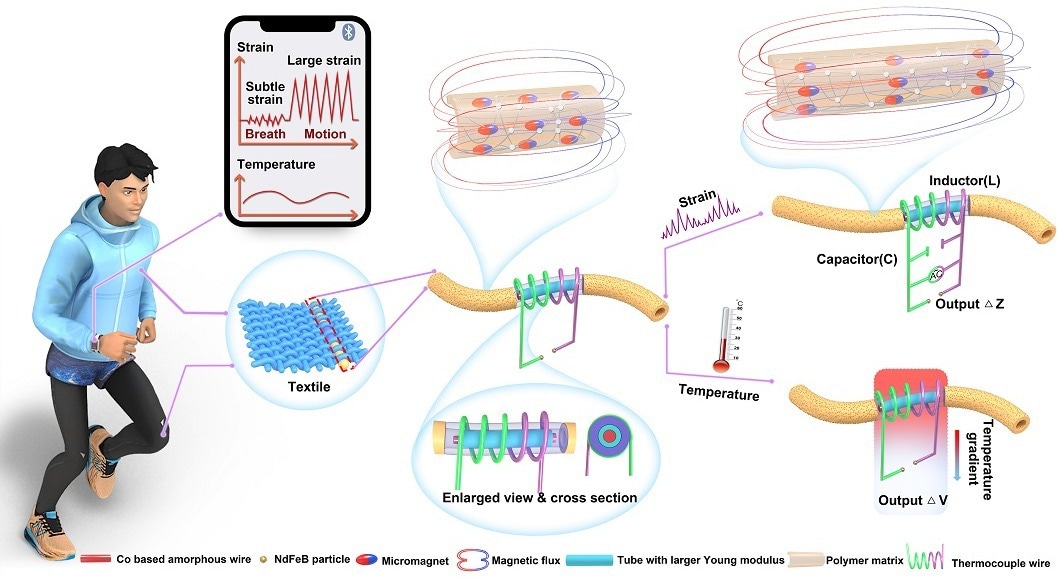
The strain-temperature dual-mode sensor with high stimuli resolution and discrimination. Image Credit: NIMTE.
This sensor has high stimuli discriminability and resolution, thereby allowing real-time sensing of strain and temperature stimuli in the absence of cross-talk by a single sensor.
This study was reported in the journal Advanced Functional Materials.
Since significant physiological parameters are produced by human activities, strain and temperature play a vital role in health and motion monitoring.
An adaptable sensor is considered to be the core component of smart wearable devices after the development of integration and multi-function in the past few years. But the discrimination and detection of strain and temperature stimuli are still difficult for a single sensor.
Co-based amorphous wire exhibits an outstanding Giant Magnetic Impedance effect and soft magnetic properties, which has the potential to identify highly sensitive detection of magnetic fields. Also, it has been recognized as a perfect material for the development of adaptable multifunctional sensors.
The scientists developed a dual-mode sensor with a tubular heterogeneous structure depending on the Co-based amorphous wire as a sensitive material. This helps realize the tracking and real-time discrimination of temperature and strain.
The newly developed sensor comprises a thermocouple coiled wound near a strain-to-magnetic induction conversion unit and a Co-based amorphous wire having a high permeability. It is possible to adjust the strain sensitivity of the sensor by customizing the mechanical modulus of the components of the strain-to-magnetic induction conversion unit.
The dual-mode sensor displayed high-temperature sensitivity, good cycling stability, and high strain sensitivity. Also, it achieved a low strain detection limit of 0.05% with a temperature sensing accuracy of 0.1 °C and a resolution of 0.1%.
Moreover, the dual-mode sensor was combined into the smart textile to constantly and separately monitor body movement, respiration, and temperature. This displays bright and extensive application prospects in health monitoring, early disease diagnosis, and human-machine interaction.
This study was financially supported by the National Natural Science Foundation of China, and the External Cooperation Program of CAS, etc.
Journal Reference:
Xiao, H., et al. (2023) Dual Mode Strain–Temperature Sensor with High Stimuli Discriminability and Resolution for Smart Wearables. Advanced Functional Materials. doi.org/10.1002/adfm.202214907.